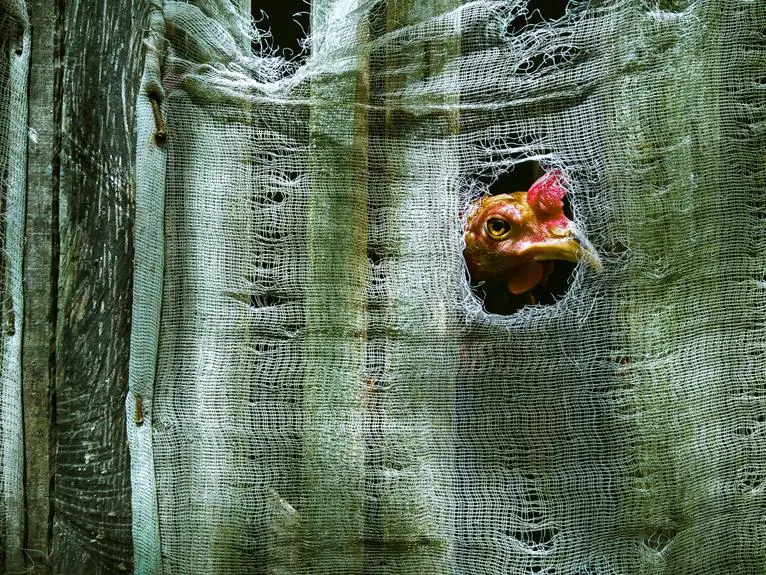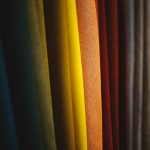You might not realize how taffeta, often seen as a luxurious fabric, carries a considerable environmental footprint. Its production is heavily reliant on synthetic fibers like polyester, which not only contributes to greenhouse gas emissions but also strains local water resources and ecosystems. As you consider the water consumption and toxic byproducts involved in its creation, it raises questions about the sustainability of this seemingly glamorous choice. What alternatives exist, and how can the industry shift towards more eco-friendly practices? The answers might surprise you.
Table of Contents
Raw Material Sourcing
Sourcing raw materials for taffeta often involves harvesting synthetic fibers like polyester, which can have significant environmental consequences. When you consider the production process, it becomes clear that extracting these materials typically requires petrochemicals, substances derived from fossil fuels. This extraction not only contributes to greenhouse gas emissions but also leads to habitat destruction. You mightn't realize how much energy and resources are consumed in this process, but it's substantial.
Additionally, the reliance on synthetic fibers means that you're indirectly supporting a cycle of pollution that affects air and water quality. When you choose taffeta, it's essential to remember that the production of these synthetic fibers can result in toxic byproducts, which may harm local ecosystems. You might think that the end product is harmless, but the journey of its creation leaves a lasting footprint.
Furthermore, the sourcing of raw materials often prioritizes cost over sustainability. This could lead to the exploitation of resources without considering the long-term impact on the environment. By being aware of these factors, you can make more informed choices about the fabrics you support and help advocate for more sustainable practices in the fashion industry.
Water Usage and Pollution
Taffeta production consumes a significant amount of water, leading to both water scarcity and pollution in surrounding areas. The processes involved in creating this fabric require extensive water use, which can strain local water resources. As you might expect, this heavy reliance on water often results in polluted runoff that contaminates nearby rivers and lakes, impacting both wildlife and human communities.
To better understand these issues, consider the following table detailing the sources of water usage and types of pollution in taffeta production:
| Water Source | Usage (Liters) | Pollution Type |
|---|---|---|
| River Water | 10,000 | Chemical runoff |
| Groundwater | 5,000 | Pesticide contamination |
| Rainwater Harvest | 3,000 | Sedimentation |
| Recycled Water | 1,500 | Dye residue |
| Municipal Supply | 2,500 | Heavy metals |
Energy Consumption in Production
In the production of taffeta, energy consumption plays a crucial role, often leading to significant environmental consequences. You mightn't realize it, but the process requires substantial amounts of electricity and fossil fuels. These energy sources contribute to greenhouse gas emissions, which exacerbate climate change.
When you consider the entire production cycle, from spinning fibers to weaving and finishing, the energy demand escalates. Each stage consumes power, and if this energy comes from non-renewable resources, the carbon footprint increases dramatically.
You should also be aware of the impact of energy-intensive machinery, which not only requires electricity but also maintenance that often involves further energy consumption. If manufacturers invested in energy-efficient technologies, they could reduce their environmental impact considerably.
Moreover, switching to renewable energy sources, like solar or wind, could help lower the carbon footprint associated with taffeta production. By making these changes, you can support a more sustainable industry and contribute to reducing the overall energy consumption in textile production.
Every little effort counts, and it's essential to push for greener practices in taffeta manufacturing.
Chemical Treatments and Their Effects
Chemical treatments applied during taffeta production can significantly impact both the fabric's properties and the environment. These treatments enhance qualities like durability, water resistance, and colorfastness, but they can also introduce harmful chemicals into the ecosystem.
When considering these impacts, it's essential to understand the types of chemical treatments used, their benefits, and potential risks. Here's a quick overview:
| Treatment Type | Benefits | Environmental Risks |
|---|---|---|
| Dyeing | Vibrant colors | Water pollution |
| Waterproofing | Increased resistance to water | Toxic runoff |
| Flame retardants | Enhanced safety | Chemical leaching |
| Anti-wrinkle agents | Reduced maintenance | Airborne pollutants |
| Softening agents | Improved feel | Bioaccumulation in wildlife |
Lifecycle and Waste Management
Understanding the lifecycle of taffeta and its waste management is crucial for minimizing its environmental impact. Taffeta, primarily made from polyester or silk, goes through several stages from production to disposal. During production, energy-intensive processes and chemical treatments contribute to greenhouse gas emissions and pollution.
Once you've purchased taffeta products, consider their longevity. High-quality taffeta can last for years if cared for properly, reducing the frequency of new purchases. However, when it's time to dispose of taffeta, recognize that many synthetic fibers, like polyester, are non-biodegradable.
To manage waste effectively, you can repurpose or donate items you no longer need, extending their life cycle. Recycling is another option, but it can be limited due to the specific materials used in taffeta production.
You might also explore brands that prioritize sustainable practices, such as using recycled materials or implementing eco-friendly production methods.
Frequently Asked Questions
What Are the Health Effects of Taffeta Production on Workers?
You'd find that workers in taffeta production face exposure to harmful chemicals, leading to respiratory issues, skin irritations, and long-term health risks. Proper safety measures and regulations are crucial to protect their well-being during manufacturing.
How Does Taffeta Compare to Other Fabrics in Terms of Sustainability?
When you compare taffeta to other fabrics, you'll find it generally less sustainable due to its synthetic origins. Natural fibers like cotton or linen often offer better environmental benefits, reducing your overall ecological footprint.
What Are the Economic Impacts of Taffeta Production on Local Communities?
Taffeta production can boost local economies by creating jobs and stimulating businesses. You'll find that artisans benefit from increased demand, while suppliers experience growth, enhancing community livelihoods and fostering economic stability in the region.
Are There Any Certifications for Environmentally-Friendly Taffeta?
Yes, you can find certifications for environmentally-friendly taffeta. Look for labels like Global Organic Textile Standard (GOTS) or OEKO-TEX, which ensure the fabric meets strict ecological and social standards throughout its production process.
How Can Consumers Reduce the Environmental Impact of Taffeta Purchases?
You can reduce the impact of your taffeta purchases by choosing certified sustainable fabrics, supporting brands with eco-friendly practices, and opting for second-hand items. Each conscious choice contributes to a healthier environment.
- How Does Ring Spun Cotton Affect Garment Fit and Shape Retention? - August 13, 2024
- What Are the Challenges in Producing Ring Spun Cotton? - August 13, 2024
- Is Ring Spun Cotton Suitable for Plus-Size Clothing? - August 13, 2024







